Whenever I see a godwit, I think he’s here. Only the smell of his coats in the closet are left, through a door I open when I’m looking for a bird but only trees, the sky, a plane, collapse into my view. I curl into the closet— a corner under which the sleeves of his coats brush my hair—and hold myself beneath their static embrace. In them he had warm arms, soft arms, the curve of his arms held my head when I slept in their fold. He hated wallpaper, but papered our library with godwit legs. “This way,” I told him, “we can fly into imaginary worlds.”
“But why do we need the visual?” he asked.
And I never had a good answer, but I won the godwit legs.
We never went to Alaska. I’d flown over New Zealand as a child, dreamt only of a green smudge in the Pacific on my way to Australia; I came across the godwit in an encyclopedia at a garage sale we’d gone to three years ago, on our hunt for a respectable dinner table for our first dining room. It was there I learned the godwit makes the longest non-stop avian migration that we know, flying from the North Slope to Christchurch in three weeks, stopping in the North Korean marshlands only if spring took its time to return. Coming home with the encyclopaedia made the journey’s failure worthwhile. We set ourselves to the project of making our own wallpaper on which to press the godwit flight further. Once, he pointed out that the godwits spend their entire lives flying a circle, that migration is their way of looking at a clock, not for what’s next but for what we have to do again. I said, “I thought you’d tell me birds don’t think that hard.” And then: “do you think the godwit can die in flight? ”
This closet interior is small. I filled it with his things to fill the space with his smell. One day the smell will lift from the room, and the closet will be filled with menswear, ready to be boxed up and taken by Goodwill. I try not to go inside. I try to look at the sky for the thin legs of the godwit or curl into the non-space of my own dreams where I nuzzle my face into his stubbled cheek. But the closet pets my hair. I’ve carved a pocket for myself to fold into, installed a clapper light and begun playing a new game: I climb inside with the lights off and reach through the dark. I clap the light on to examine what I’ve taken unknowingly, without light. I clap the lights off, and begin telling myself a story.

I awoke to the Discovery Channel glowing the scene of a godwit in surgery. Two scientists had caught her warming their decoy eggs in the North Slope fields to track her body, to study her flight. I watch her now, a half-open being, incised under a sheet of plastic and marvel at her soft bird belly, her soft bird breath.
In one of her five lungs they insert a satellite tracker. “In a month, pink tissue will form around it,” the scientist tells us, “covering it completely by the bird’s own organ.”
They wake her quickly from the ether and her eyes roll around the operating room. She is wingswept. Her head slowly turns left and then right in the scientist’s palm. He rubs a knuckle on her cheek. I look over to tell you they’ve altered the pattern of her body from air and lung and bone to air and door and bone, to puzzle you with my name for the satellite: a half-open door, a covenant between the godwit and outer space and us, but I am alone.
I close my eyes and look at my view of the earth orbiting the sun, of the clouds swarming the Pacific Ocean, of the holes swirling the atmosphere where tropical storms are forming. Now in my dream the sun powers her body, collecting and transmitting her data, her real-time glow on their machines but I only see the sun roll over bright sky after sky after sky. “We are chasing the light through her,” I turn and tell you, but you are asleep in my dream, away from me. I invite myself to recreate your anatomy. I slide my hand under the top sheet to skim your back, slip over your hipbone, and trace your breath until I think my own arm is resting, and rising and falling with your sleep.
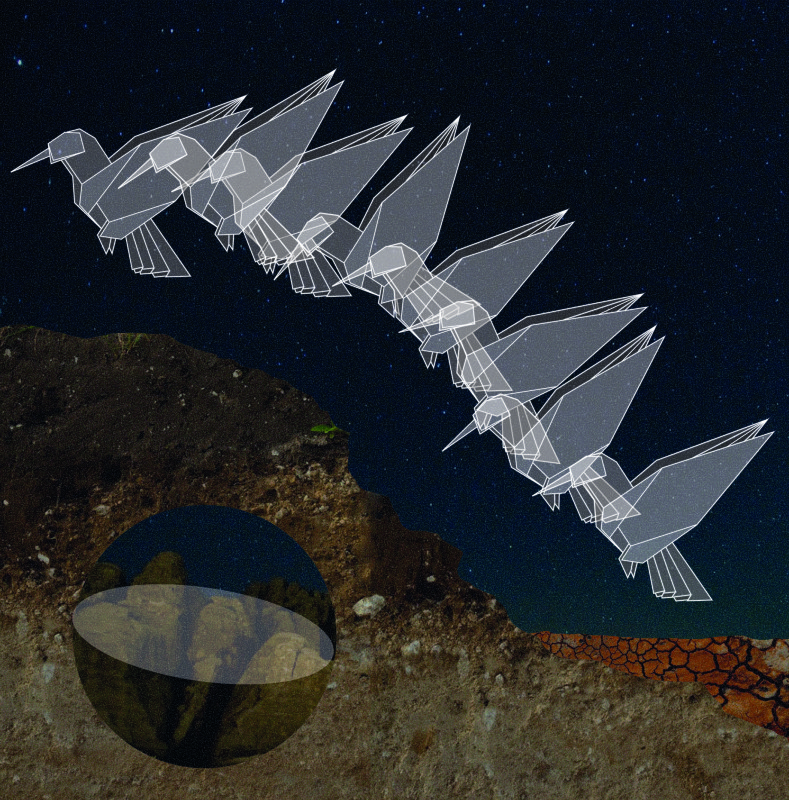
There is one fold to the paper crane that I have trouble remembering. I have been producing instead a catamaran, a cat, an elephant. Sometimes, when I emerge from the closet I go to my desk where I’ve begun a small collection of origami animals. They all begin with the promise of becoming a crane, and I am intent on letting my fingers remember how the crane’s shape takes form, to let myself the pleasure of making the mouse, the cup, the zebra. I think you would love watching their emergent forms. When I finally make a crane, I think I will dive-bomb my zoo made and let the animals scatter across the desk, an emergent form between sleeping and talking to you. I close my eyes and a pile of animal lungs fall into my lap. Slicked with breathing machines, my topography shakes like a mild earthquake.
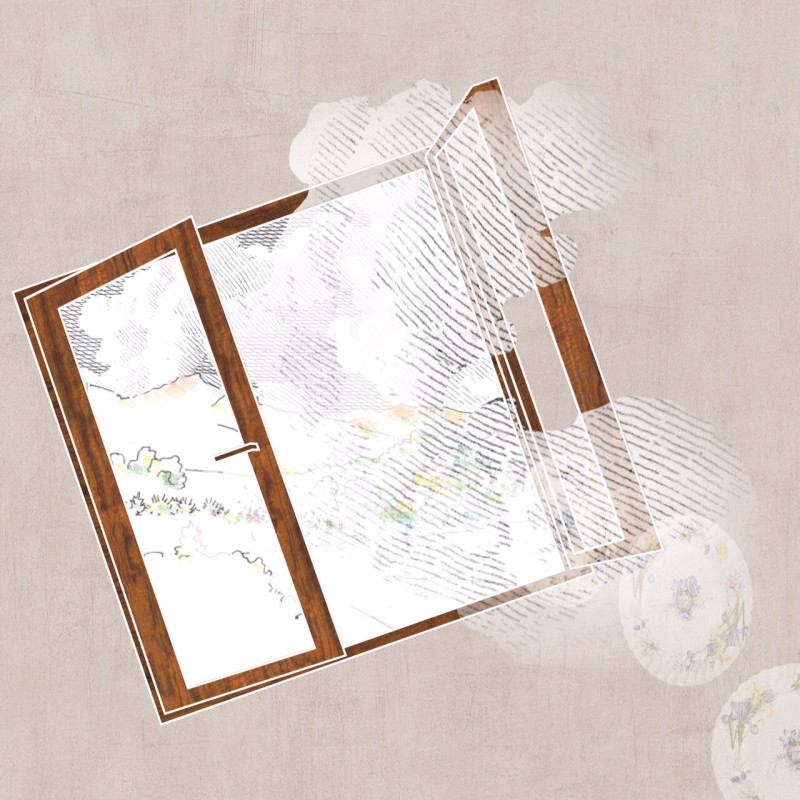
Looking out the window isn’t enough. I’m holding a plate of pierogi and potato pancakes over the alstroemeria and mallow on the corian china. I tilt my head. The hillside follows the round clouds coming in to lift me like a trapped animal feeling for the edges of my glass vitrine. Finding them, I step into a rounded landscape where the mallow roll into the sky.
I’d thumbed through a lot of books at that garage sale. So many I was convinced that a rusted dinette table with a moth mottled inside the silverware drawer was an ideal food surface for our home. I’d been through pages of picture books, romanced by an image of a woman at the edge of earth and heaven etched just beyond her bedroom. She leaned into her window showing us her long hair and her buttoned dress. We could not see what she did, and suspected that she was on the edge of two rounded worlds. It was our own limits that stopped us from seeing fully into either of her realms.
Now, I am only feeling my feet move through the grass. I’m wetting my breath and ankles with cool air. “I must have slept through rain,” I think, “the sky is feathered blue.” In an earlier dream I would save these words to give you, pick through my vocabulary for the most inviting tones.
I push my tongue around and around. When I reach the top I will roll back down and head straight inside the house to find a heavy-duty trash bag. “To begin again,” I say aloud, “with a makeshift summer sled.”
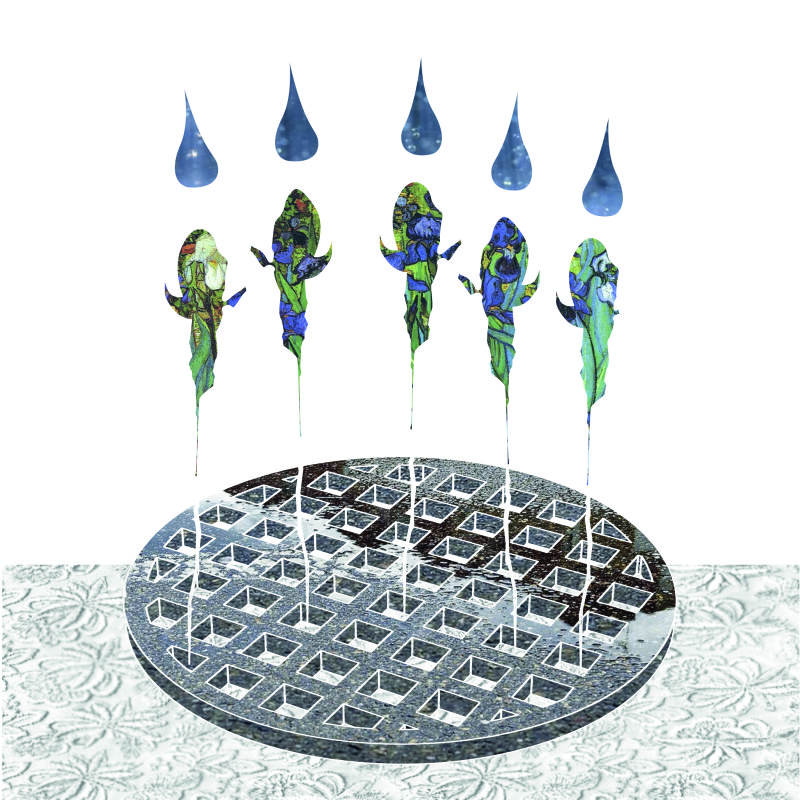
In the gallery I put my hand in front of the irises, separating the composition with my fingers. “Van Gogh mused that life is probably round,” I tell you, “but here we are, on the edge of a country field.” But the gallery is empty, The Getty is empty. I walk out to the courtyard to see Los Angeles spread between Big Bear and the ocean, a long way out. Planes ascend over the waves and pock the sky toward the horizon. When he imagined life was round, van Gogh hoped that science would have by now moved the edges of time.
“But our poor pictures of the universe,” I told you in bed, “show us there’s an edge. And the galaxies have tinted it pink.”
Lingering over the skyline now, I watch light augment the city, stretching the blue-grey of the freeways that divide and encircle shopping centers, houses, and topaz swimming pools.
In one room we have his roses, his irises, the sunflowers he made for Paul Gauguin; life slicked with paint and slipped into vases. Holding my hand in front of the irises, I feel a velvet nothing press back. On one of Gauguin’s last visits to the yellow house van Gogh painted fourteen sunflowers and placed them in the guest room. They were a study of friendship and light, lifted compositions from Japanese prints. When they worked they summoned the brush strokes of printing masters. In these sunflowers I see a history of time. “Perhaps this is why science mapped the walls of the universe, so that we can contain our own flowers,” I whisper.
“But the black hole,” you reply, “is an opening in the edge.”

You awoke to find that I had gone for a long swim. Sitting now, at the edge of our bed, with my nightgown folded in your hands, you seem to believe that you are a long way from home, and that I left you when I went into the water. But you are alone. You’ve skimmed the skin of the universe, and by claiming that I was the one who left you, I can come here, too, sometimes. See how you are doing and to replay a minute against the pink sky.
Today you notice I’m leaning awkwardly, bent a little forward as I lift myself onto the bed, as though I were crafting the illusion of movement. I breathe short ripples onto the water, take my nightgown from you, and put it over my head. My arms, sore from carrying myself from the closet to the bed, move through the fabric, and soon I’m next to you again, ready to record the stories you wrote in your mind while I was away. I reach under a pillow for the black moleskin notebook and open to a blank page.
“Do you have one yet for the godwit who never made it to New Zealand?” I ask.
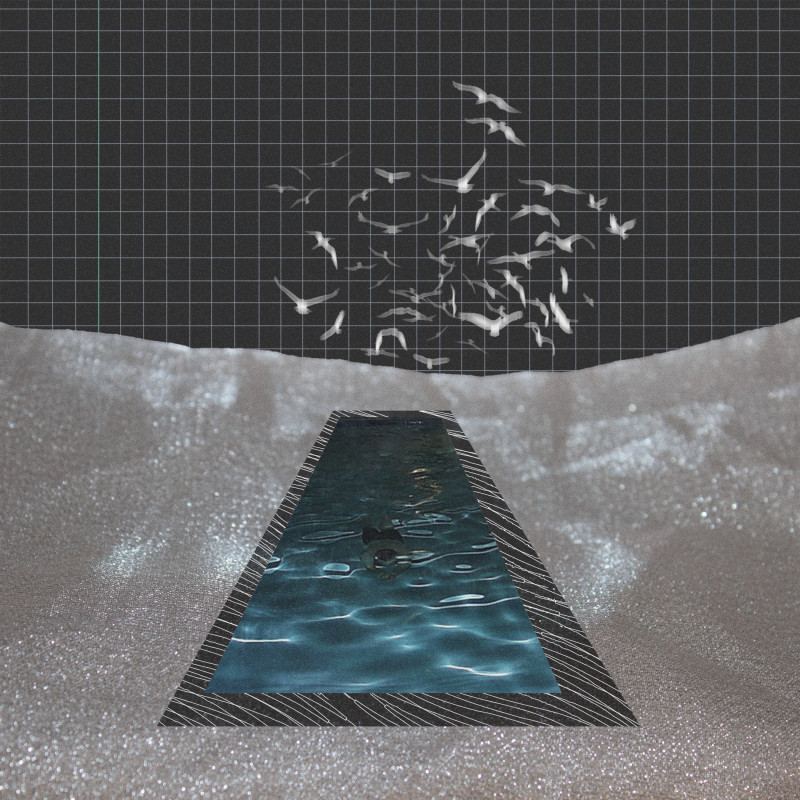
Sometimes, in the new landscape, a crater lake appears and I take off all of my clothes. When my heart presses against my ribs, my cartilage, the salmon swim very close. I watch rainbows shimmer across their bodies. I watch light reflect the surface of the water that is so white with the sun. I think that the new landscape is the doorway I wanted to tell you about the other night. It’s sitting on my desk as an unfinished sentence.
That sentence was actually about breathing machines and intubations. I was describing how it feels to take your first breath after a machine has breathed for you. How air itches your throat.
At the edge of the universe there are no mornings, no passages of time except through the water. Here, our ceaseless flight is tracked by the satellites reaching into our lungs. Our bodies light the sky. They circle and part the landscape. If you could see me now. The universe has forced me to learn to dive. I can’t see my own tiny splashes, only the blue, the rush of water weeds, the refractions of light as the fish make room for me to move through the waterscape. When I resurface my first breath is an emergence into morning, into the sentence waiting at my desk for me to finish.
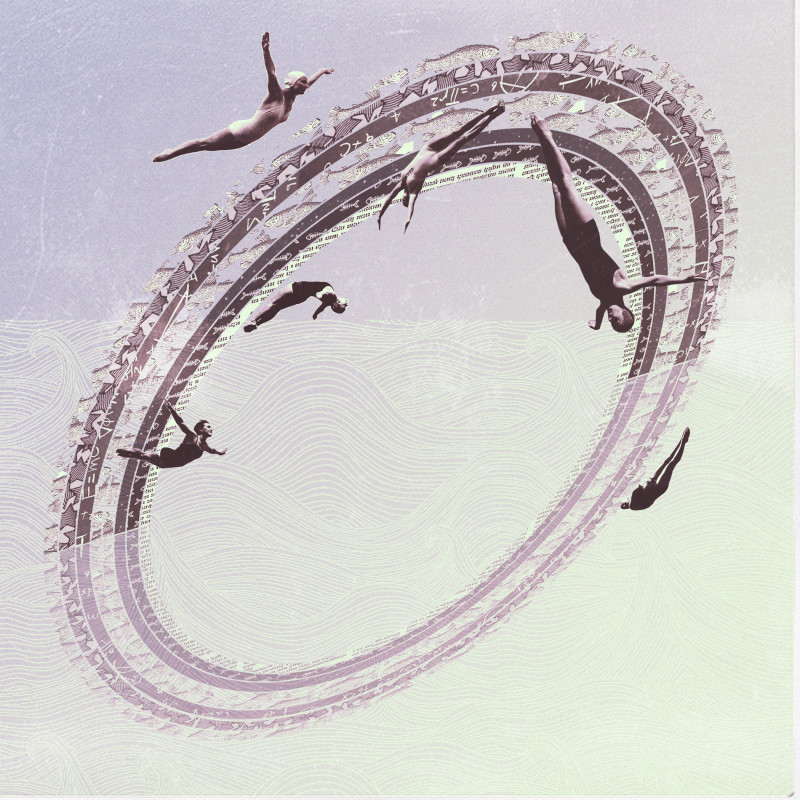
Jen Hyde is the author of Hua Shi Hua (画诗华) Drawings & Poems from China, forthcoming from Ahsahta Press. Her practice experiments with generative translation and new technology for the production of printed things. She holds an MFA in poetry from NYU and a BFA in creative writing from Pratt Institute. She lives and works in Brooklyn, New York where she is a collaborative chapbook publisher for No Dear/Small Anchor.
Stewart Hicks and Allison Newmeyer are cofounders of the firm Design With Company, which explores the intersection of literature and architecture. The firm was recently featured as Next Progressives by Architect Magazine, Next Generation by Architectural Record, and included in the Chicago Architecture Biennial. Hicks received his MArch from Princeton University; Newmeyer, from the University of Michigan. They teach at the University of Illinois at Chicago.